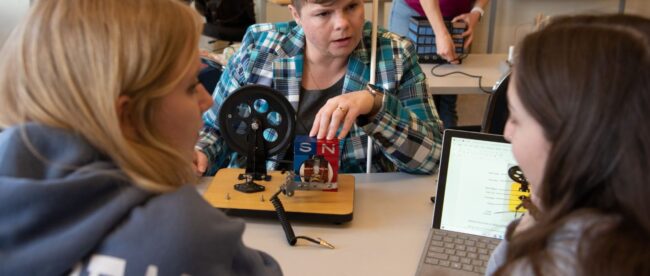Illinois State University Professor Awarded $1.5 Million NSF Grant to Improve Science Education for Blind and Low-Vision Students
Dr. Natalie L. Shaheen, an assistant professor at Illinois State University, has been awarded a substantial National Science Foundation (NSF) CAREER grant of over $1.5 million to address inequities in science education for blind and low-vision (BLV) students. This five-year grant, the largest in her department in 25 years, aims to improve accessibility in high school science classes, particularly those utilizing technology. Shaheen’s project involves researching educational disparities and developing case studies with teachers to create “born-accessible” science classes. Additionally, the grant will help elevate the profile of ISU’s unique undergraduate program for BLV specialists, drawing national attention to its innovative approach.
Shaheen emphasizes that while physical accessibility has improved with ramps, braille signage, and push-button doors, digital advancements have paradoxically made K-12 education less accessible for BLV students. She points out that technology, often considered a universal benefit, can obstruct BLV students’ learning, especially in science education which has moved away from tactile methods like dissections and physical models to virtual simulations. Advocating for a return to hands-on learning, Shaheen argues for proactive rather than reactive accessibility in education, where the burden of adaptation often falls unfairly on BLV students.
Her work is driven by her own experiences as a blind student discouraged from pursuing STEM due to inaccessible education. Through her project, Shaheen aims to ensure that BLV students can fully engage in science without the extra burden of negotiating access, enabling them to spend their time learning rather than adapting. By promoting proactive accessibility, she seeks to allow BLV students to leverage their exceptional problem-solving skills—skills that she believes make them excellent scientists.
Overall, Shaheen’s efforts are not just about enhancing accessibility but also about transforming perceptions and opportunities for BLV individuals in science. Her research and the development of resources for teachers are steps toward a more equitable education system where BLV students have the same opportunities in STEM careers as their sighted peers. By lowering the barriers that have historically limited BLV people from science careers, Shaheen’s work could have an exponential impact on the field, benefiting from the unique perspectives and skills of BLV individuals.
Source: Illinois State University, WGLT
ChatGPT, a potential tool for increased accessibility, was used as a research and writing aid for this blog post. Do you think this is an appropriate use of chatGPT? Why or why not? Let me know!


Leave a comment